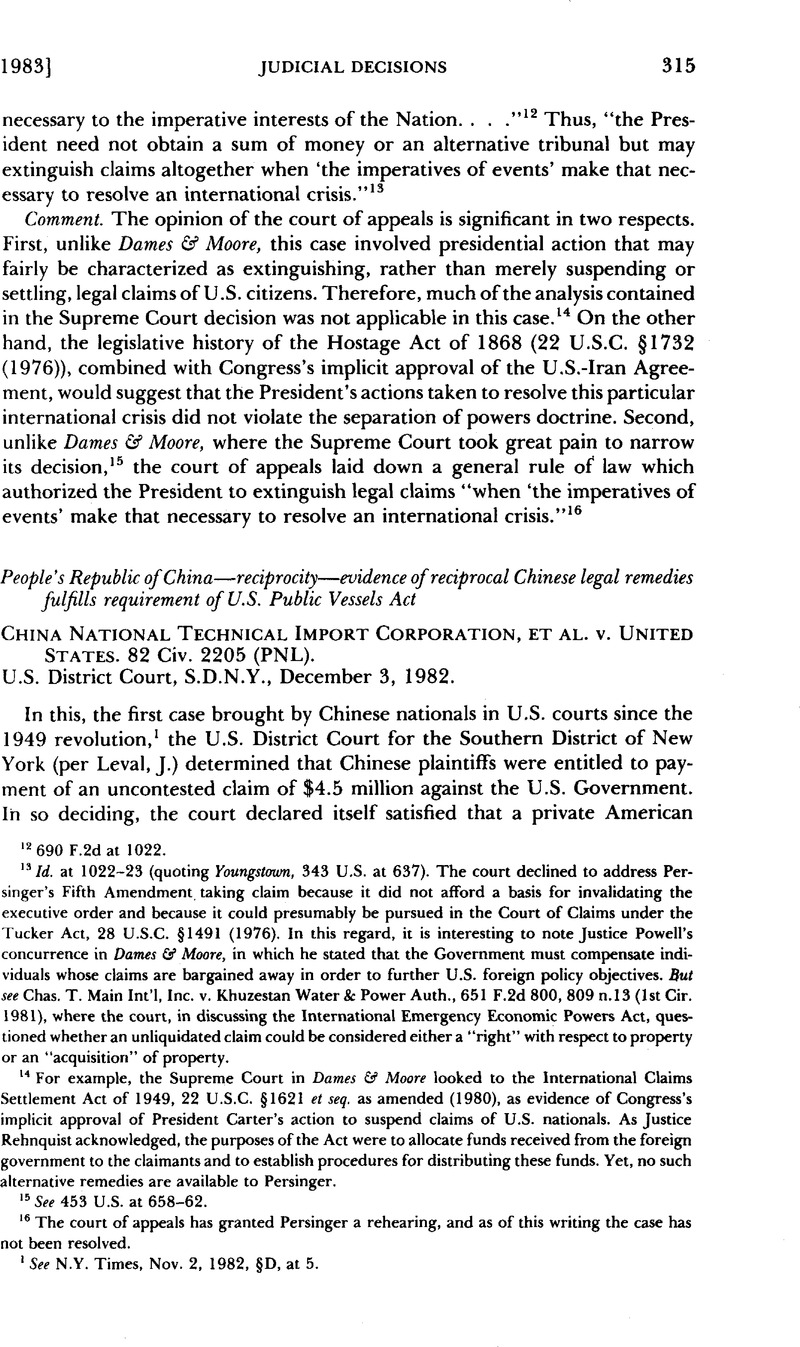No CrossRef data available.
Article contents
China National Technical Import Corporation, et al. v. United States. 82 Civ. 2205 (PNL)
Published online by Cambridge University Press: 27 February 2017
Abstract

- Type
- Judicial Decisions
- Information
- Copyright
- Copyright © American Society of International Law 1983
References
1 See N.Y. Times, Nov. 2, 1982, §D, at 5.
2 Indeed, by the time this case arose, the United States had admitted liability for the accident and had compensated Japanese victims of the collision. See ibid.
3 The opinion, dated Jan. 20, 1982, was accompanied by a letter of Feb. 16, 1982 from the Embassy of the PRC attesting to the CCPIT’s competence and qualifications. According to the affidavit of R. Randle Edwards (see note 4 infra, and accompanying text), the CCPIT plays a major role in the development of China’s foreign trade. Its work includes mediation and arbitration in maritime and foreign trade disputes, and its Legal Counsel Office provides legal advice to Chinese and foreign clients.
4 Affidavit of R. Randle Edwards, July 9, 1982, at 4. Professor Edwards noted, however, that court records are not the best source of Chinese legal principles because the Chinese traditionally have preferred to resolve disputes through conciliation or mediation and because China is essentially a civil law jurisdiction. Id. at 11.
5 Id. at 19.
6 Affidavit of R. Randle Edwards, Dec. 1, 1982, at 4.
7 Nicholas E. Vernicos Shipping Co. v. United States, 349 F.2d 465, 470 (2d Cir. 1965) (also involving application of the Public Vessels Act).


